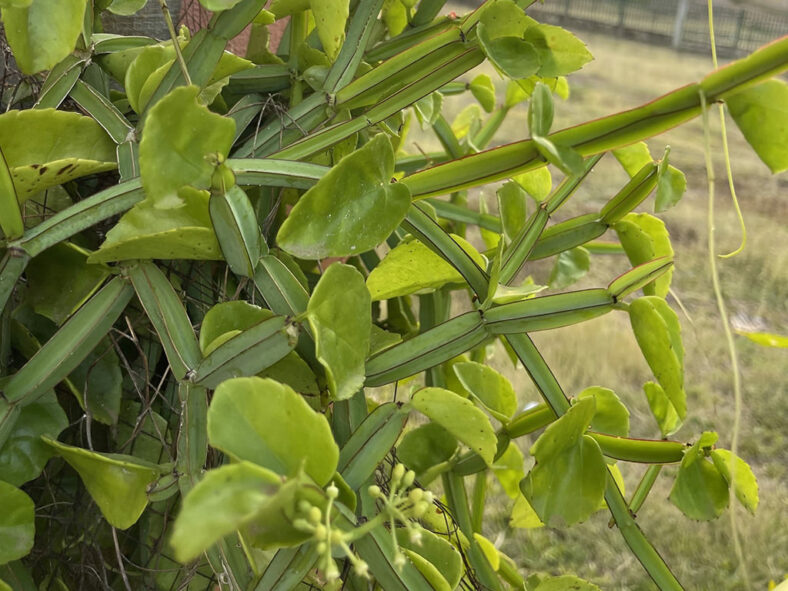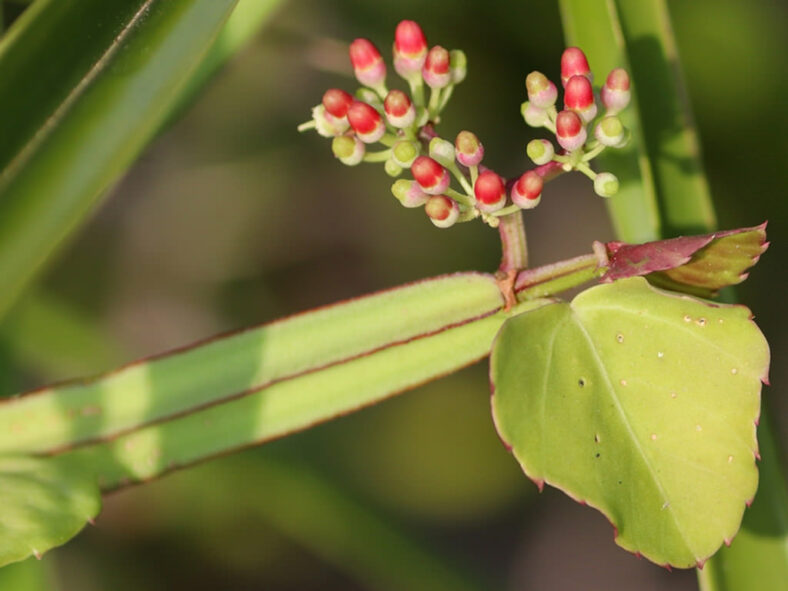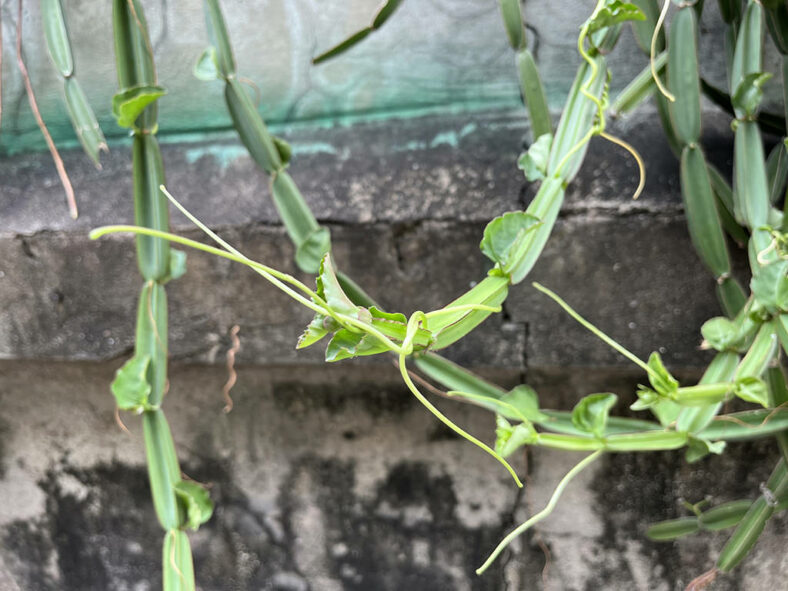Cissus quadrangularis looks best when its stems cascade from hanging baskets or is trained to grow on a trellis or similar support. This perennial plant has medicinal properties and is found throughout the tropical world. It is one of the most frequently used medicinal plants in India.
Scientific Name
Cissus quadrangularis L.
Common Name(s)
Adamant Creeper, Devil's Backbone, Edible Stemmed Vine, Grape Leaf, Veldt Grape, Winged Treebine
Synonym(s)
Cissus quadrangularis var. quadrangularis, Saelanthus quadragonus, Vitis quadrangularis
Scientific Classification
Family: Vitaceae
Subfamily: Vitoideae
Genus: Cissus
Etymology
The specific epithet "quadrangularis (kwad-ran-gew-LAIR-iss)" means "having four sides, quadrangular" and refers to the shape of the stems of this species.
Origin
Cissus quadrangularis is believed to be native to India, Bangladesh, and Sri Lanka. It is also observed in Africa and Southeast Asia.
Description
Cissus quadrangularis is a climbing succulent with green, branched, quadrangular stems that are constricted at the nodes and have winged angles with a reddish-brown marginal line. The stems are fleshy, smooth or slightly downy, and almost leafless when old. They can grow up to 50 feet (15 m) long. The internodes can measure up to 4 inches (10 cm) long and 0.6 inches (1.5 cm) wide, and each has a tendril that grows in the opposite direction of the leaf. The leaves are variable in shape, smooth on both surfaces, and can grow up to 2 inches (5 cm) long and 1.2 inches (3 cm) wide.
During spring and early summer, Cissus quadrangularis produces compound umbelliform cymes of inconspicuous flowers with petals that range from white to yellowish or greenish. The flower buds are pinkish-red. The fruits are one-seeded subspherical berries that can reach up to 0.4 inches (1 cm) in diameter. They are green but turn red when they ripen.

How to Grow and Care for Cissus quadrangularis
Light: Cissus quadrangularis flourishes in full sun to light shade. In summer, move the plant outdoors to experience warmer temperatures and increased daylight.
Soil: This plant does well in most soils but prefers well-draining soil.
Temperature: Cissus quadrangularis thrives under warm temperatures and does not tolerate frost. It grows best in USDA Plant Hardiness Zones 11a to 11b, with average minimum winter temperatures ranging from 40 to 50 °F (4.4 to 10 °C).
Watering: Water deeply from spring to fall, allowing water to run out of the drainage hole. Then, wait for the soil to dry out before watering again. Water sparingly in winter.
Fertilizing: Apply a balanced liquid fertilizer monthly during the growing season.
Repotting: Cissus quadrangularis is suitable for containers. Repot it every 2 to 3 years and top dress in spring.
Propagation: This plant is easy to propagate by cuttings. There is no minimum size for a cutting to root. A stem section with several segments is best, but Cissus quadrangularis can also be propagated from a single segment.
Learn more at How to Grow and Care for Hoya.
Toxicity of Cissus quadrangularis
Cissus quadrangularis is considered non-toxic, so having it around kids and pets is safe.
Links
- Back to genus Cissus
- Succupedia: Browse succulents by Scientific Name, Common Name, Genus, Family, USDA Hardiness Zone, Origin, or cacti by Genus
Photo Gallery
Click on a photo to see a larger version.



